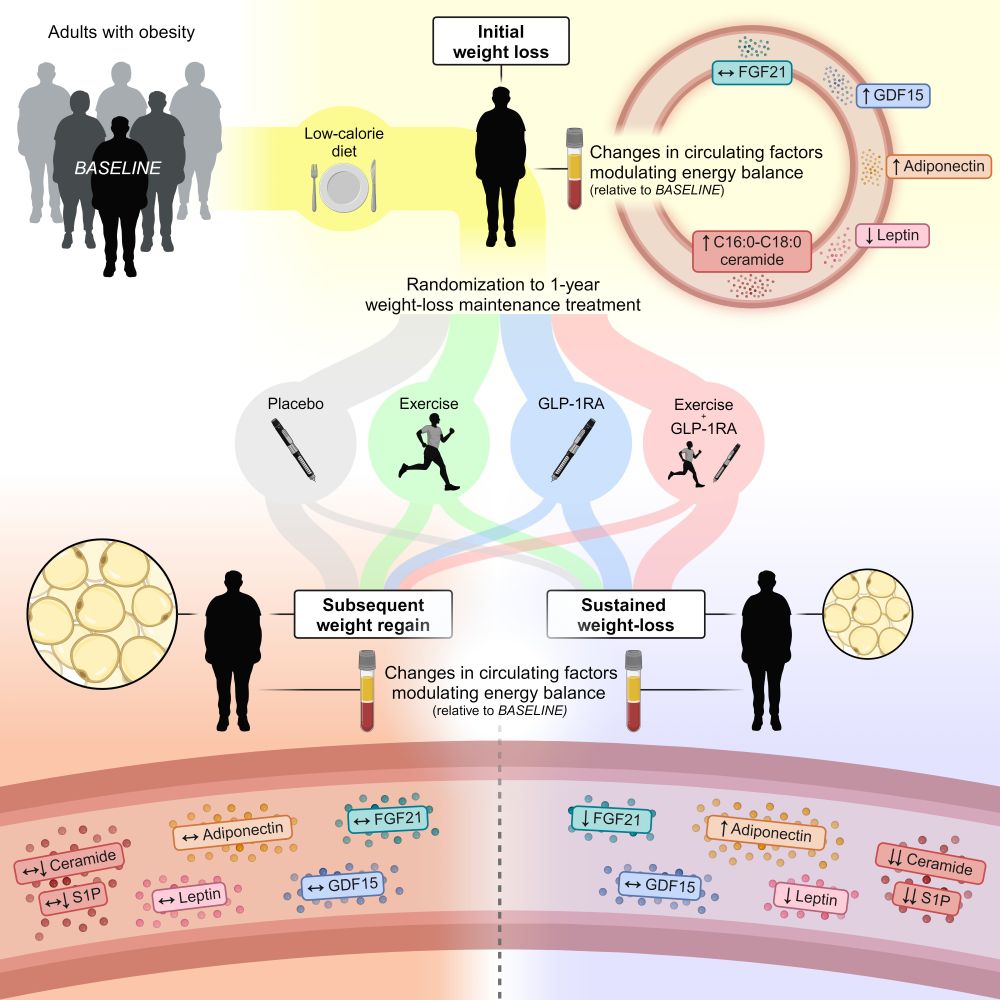
Likewise, a multitude of sphingolipid species were differentially regulated in weight maintainers vs. regainers.

Likewise, a multitude of sphingolipid species were differentially regulated in weight maintainers vs. regainers.

Remarkably, the initial weight loss and the subsequent weight-loss maintenance phase evoked divergent alterations in a subset of ceramides causally linked to obesity.

Remarkably, the initial weight loss and the subsequent weight-loss maintenance phase evoked divergent alterations in a subset of ceramides causally linked to obesity.




we confirmed that disrupted GLUT4 trafficking is a key molecular mechanism by which mitochondrial oxidants impair muscle insulin action.

we confirmed that disrupted GLUT4 trafficking is a key molecular mechanism by which mitochondrial oxidants impair muscle insulin action.

we employed an in vivo mechanistic approach to interrogate whether the causal link between mitochondrial oxidative stress and insulin resistance translates to humans.

we employed an in vivo mechanistic approach to interrogate whether the causal link between mitochondrial oxidative stress and insulin resistance translates to humans.


